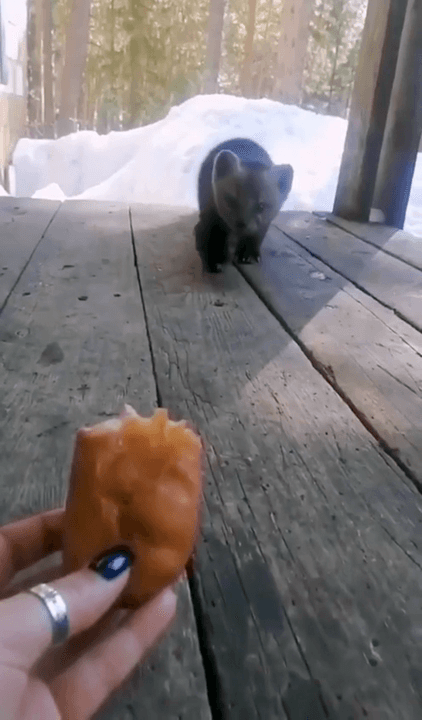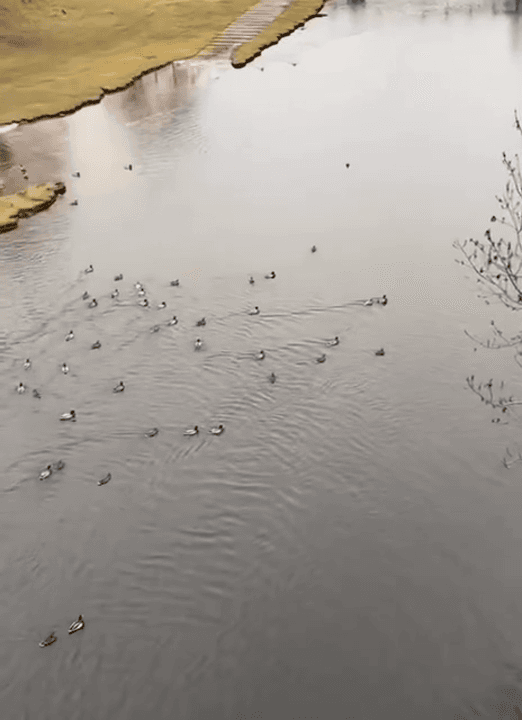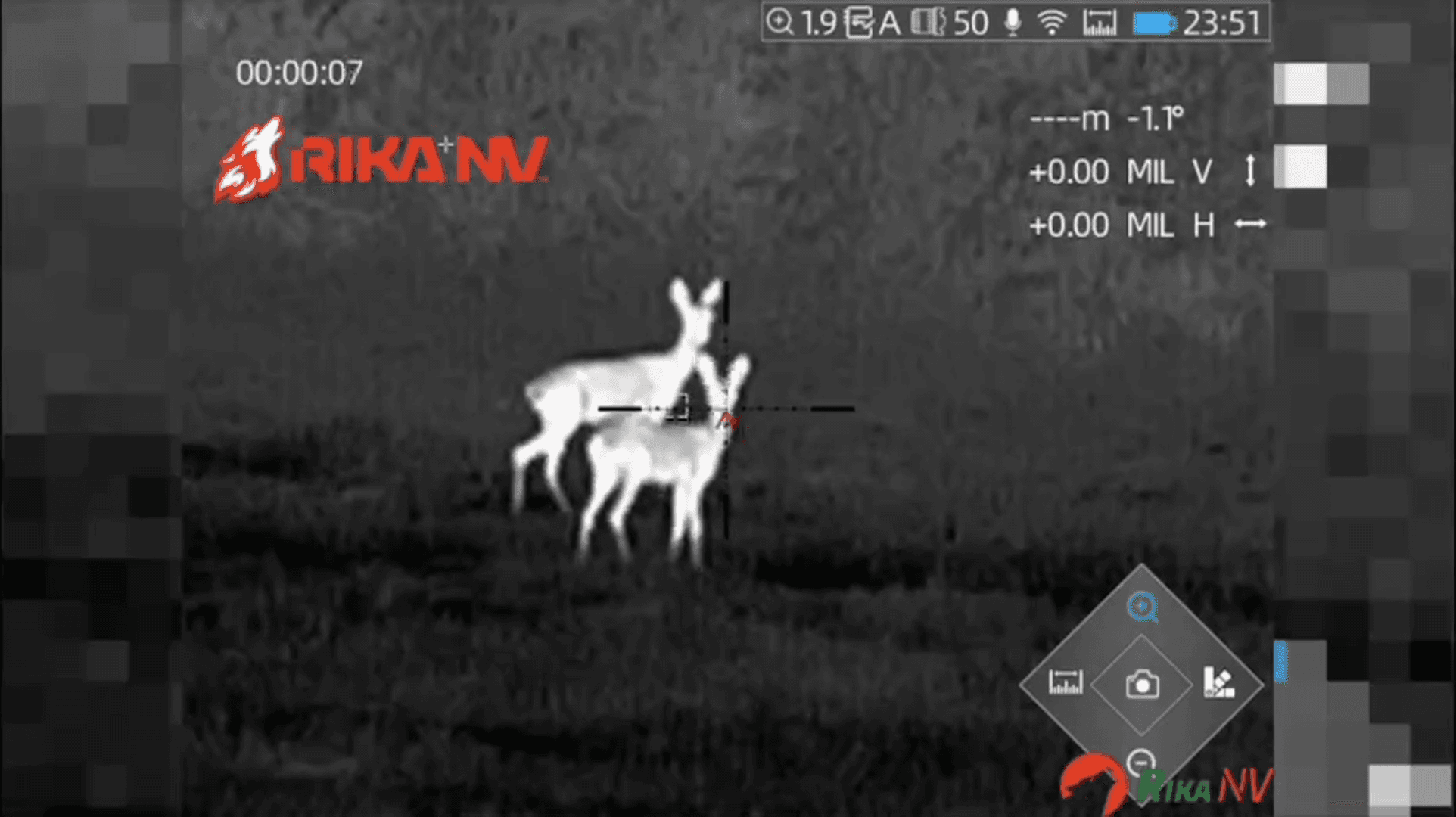Results by search “Falconary in China” 3475
The Chronicles of Narnia Nyassa
🇲🇿 Mozambique is a country as mysterious and beautiful as the one in the closet)
In the northern regions, in the Nyassa reserve, it is already hot and very dry, but there are big plans for hunting.
And they are being fulfilled 💯
In the feed - achievements of the last couple of days, and everything has just begun 🔜
A safari for the Big Five species and not only can become a great adventure, especially if on the other side of the scale is November in the Old World.
Come to 🌍 Africa, there is always a winning option in any scenario!
Who wants a lion 🦁, buffalo 🐂, leopard 🐆, crocodile 🐊?
All the riches of Mozambique for you, call!
💬 write to Telegram (https://t.me/safari_stalker)
#hunting_in_Africa
Capra neagra,( Rupicapra rupicapra), in numar de cateva sute de exemplare, este protejata de lege si este o adevarata mandrie a tarii noastre, salasluieste pe crestele alpine, greu accesibile chiar si celor mai experimentati alpinisti. Mamifer erbivor prin excelenta, capra neagra isi face rareori simtita prezenta. Capra neagra este regasita cu predilectie in regiunile stancoase si pe pajistile alpine din Europa, in special, in Carpati (Retezat, Parang, Fagaras, Bucegi), Pirinei si Alpi, si din Asia Mica.
The sable is a mammal of the genus of martens. It is widespread in the forest zone of Siberia, the edge of its range extends to the north of Eastern Europe.
The body length of the sable is 32-58 cm, the tail is 9-17 cm, and the weight is 0.9—1.8 kg. Males are larger than females. Sable fur is one of the most valuable, which is why sable has been exterminated for centuries. On the other hand, the extraction of sable and the trade in sable fur has long served as one of the significant income items in the Russian economy.
Sable is of great importance in Russian culture and traditions. In some Russian folk wedding songs, the sable is the personification of the groom, while the paired character, the bride, is the marten. The images of the groom are especially clear, as the sable appears in the North Russian wedding songs. In the Belarusian tradition, a young couple is symbolized by a sable and a squirrel. Sable is of particular importance in the Buryat culture. The sable was a totemic a
Hunting Seasons in Lofoten Islands: Restrictions, Bans, and Protected Species, Choosing Timing, Gear, and Tactics
The Lofoten Islands provide a unique hunting experience amid stunning Arctic landscapes and rich wildlife. To ensure a successful and legal hunt, it is vital to understand the official hunting seasons, regional regulations, licensing requirements, and best hunting periods. This guide offers a comprehensive overview to help you plan your adventure in this spectacular Norwegian archipelago.
Regional Hunting Timetables and Rules in Lofoten Islands
Hunting in the Lofoten Islands follows strict seasonal schedules set by Norwegian authorities to balance sustainable wildlife management with traditional practices. The main hunting season runs from August to December, covering most game species. There is also a limited hunting period in April and May for certain bird species. The Arctic climate and migratory patterns significantly influence these seasons, resulting in shorter hu
Coastal Hunting Grounds of MAHDIA: Hunting Seasons, Laws and Demographics, Geographical Aspects of Tunisia
Geographic Context and Natural Terrain in Mahdia
Mahdia, located along Tunisia’s eastern Mediterranean coast, offers a flat yet fertile hunting landscape shaped by olive groves, coastal brushlands, and inland agricultural zones. The region's terrain lacks forests or mountains but compensates with wide plains, low scrub, and intermittent wetlands that support migratory bird activity. With a mild Mediterranean climate and moderate rainfall in winter, Mahdia’s rural stretches become seasonally active with game, particularly in the cooler months. The flat topography allows for long-range visibility, influencing hunting styles that favor patience and precision over dense-cover tracking.
Hunter Demographics and Local Participation in Tunisia
The hunting community in Mahdia is moderately sized but well organized, with most licensed hunters residing in towns such as El Jem, Ksour Esse
Hunting in Butaleja, Uganda: Geography and Natural Features, Hunting Demographics, A Hidden Gem for Unforgettable Hunting Adventures and Cultural Immersion (PART II)
Associations and Clubs for Hunters in Butaleja
While there are no prominent hunting associations or clubs specifically in Butaleja, the region's hunting community is well-connected. Local guides and outfitters often organize group hunts and provide valuable insights into the best hunting spots. International hunting organizations, such as Safari Club International, also have members who frequently visit Butaleja for its unique hunting opportunities. These associations promote sustainable hunting practices and provide a platform for hunters to share their experiences and knowledge.
Traditions and Cultural Practices of Hunting in Butaleja
Hunting in Butaleja is deeply rooted in the region's cultural heritage. Traditional hunting methods, such as the use of traps, spears, and dogs, are still practiced by some members of t
Hunting in Cuvette: River Systems and Wetlands, Local Hunting Communities, and Wildlife Diversity
Hunting in Cuvette region offers a deep connection to Central African wilderness, making it a vital destination for both traditional and regulated hunting. The region, rich in biodiversity and shaped by natural river systems, supports a variety of game species and a hunting culture still very much alive among local communities. Hunting in Cuvette region is defined by its remote terrain, seasonal dynamics, and the continuation of indigenous knowledge passed down through generations.
Geographic and Environmental Features
Cuvette, located in the central-northern part of the Republic of the Congo, is dominated by tropical rainforests, swampy basins, and lowland floodplains, particularly those surrounding the Congo and Likouala rivers. This hydrographic system creates unique wetland ecosystems rich in biodiversity. The area experiences an equatorial climate, with high rainfall and humidity,
Hunting in Namibia’s Khomas Region: Legislation, types of hunting, geographical features, hunting seasons, hunters, clubs, hunting specifics, traditions, interesting facts
Hunting legislation in the region
Hunting in the Khomas region of Namibia is a well-regulated activity governed by the Ministry of Environment, Forestry & Tourism (MEFT). Strict rules ensure sustainability and ethical practices, including mandatory permits for all hunting activities, which must be obtained through registered outfitters. Annual quotas are set per species to prevent overhunting, and temporary import permits are required for firearms, with automatic weapons prohibited. For certain species like leopards, CITES permits are necessary for trophy export.
Types of hunting and game species in Khomas
The region offers a diverse range of game species, catering to different hunting preferences. Among the big game, kudu is a challenging trophy often found in rocky terrain, while oryx (gemsbok) thrives in t
Hunting in Singida Region, Tanzania: Hunting Seasons, Clubs and Demographics, Hunting Organizations of Tanzania
Natural Features and Aspects in Singida Region
Singida Region, located in central Tanzania, encompasses approximately 49,340 km² of diverse landscapes. The terrain is characterized by semi-arid plains, scattered woodlands, and rocky outcrops. The region experiences a semi-arid climate with a single rainy season from November to April, influencing wildlife distribution and hunting conditions.
Notably, the Simbanguru/Igwamadete Open Areas in Manyoni District are designated for resident hunting, offering opportunities for sustainable game harvesting.
Hunters and Demographics in Tanzania
As of the 2022 census, Singida Region has a population of approximately 1.7 million people. The region is predominantly rural, with communities engaged in agriculture and livestock rearing. While specific data on the number of hunters is not readily available, the presence of designated res
Hunting in Mityana Region, Uganda: Wildlife, Traditions, Rules, and Exceptional Hunting Opportunities
Mityana, a region in central Uganda, is often overlooked by international hunters seeking big game adventures, but it offers a unique hunting experience with its diverse landscapes, rich wildlife, and growing hunting tourism sector. Whether you're interested in big game hunting or small game hunting, Mityana provides hunters with a range of opportunities. This comprehensive guide will delve into the geographical features, wildlife, hunting seasons, regulations, and more in Mityana to help you plan your next hunting safari in this promising Ugandan region.
Geographical Features of Mityana: Ideal Terrain for Hunting
Mityana, in central Uganda, borders Mubende, Kampala, and Nakaseke. Its landscape combines savannah, wetlands, and forests, offering diverse hunting terrain. Open savannah suits large game, while forests and wetlands challenge small game and bird hunters.
The tropical cli
Hunting in Kigoma Region, Tanzania: Laws and Legislation, Demographics and Demography, Geography of Tanzania
Geographical and Natural Features of Kigoma Region
Kigoma Region, located in western Tanzania, borders Lake Tanganyika and encompasses diverse terrains, including the Mahale Mountains and extensive woodlands. The region's varied topography, ranging from lake shores to mountainous areas, provides habitats for a wide array of game species, making it a notable area for hunting activities.
Hunters and Demographics in Kigoma
While specific data on the number of hunters in Kigoma Region is not readily available, Tanzania's hunting industry is well-regulated, with numerous hunting concessions and licensed outfitters operating across the country. Kigoma's remote and less-developed areas may attract hunters seeking unique and challenging experiences.
Hunting Practices and Traditions in Tanzania
Hunting in Tanzania, including Kigoma Region, is conducted under strict regulations to en
Hunting in Buikwe, Uganda: Geographical Features, Demographics, Associations and Clubs, Laws and Hunting Seasons
Geographical and Natural Features of Buikwe for Hunting
Buikwe District, located in Central Uganda, offers diverse landscapes ideal for hunting. The region is characterized by savannah grasslands, dense woodlands, and proximity to Lake Victoria, providing rich habitats for game. The tropical climate ensures year-round hunting opportunities, though seasonal variations affect animal movement. Key hunting zones include riverine forests and open plains, where wildlife thrives.
Hunters and Demographics in Buikwe
Exact numbers of active hunters in Buikwe are not officially recorded, but the region attracts both local and international hunters. Local hunters often engage in subsistence hunting, while foreign visitors participate in regulated trophy hunting. The demographic is mixed, with Ugandan hunting guides and international clients forming the core of the hunting community.
Hunting in Arusha, Tanzania: Laws and Legislation, Demographics, Clubs, Geographic Information for Hunters
Natural Features for Hunting in Arusha Region in Tanzania
Arusha, located in northern Tanzania, is a prime hunting destination due to its diverse landscapes, including savannas, montane forests, and the foothills of Mount Meru. The region borders the Serengeti and Ngorongoro Conservation Area, providing rich wildlife habitats. Key hunting areas include Masailand and the Rift Valley, offering varied terrains from open plains to dense bush.
Demographics and other Aspects of Arusha Region
Exact numbers of hunters in Arusha are not publicly documented, but Tanzania issues around 1,000 hunting licenses annually, with a significant portion allocated to Arusha’s concessions. Most hunters are international visitors (primarily from the U.S., Europe, and Russia), while local hunting participation is limited due to high costs and regulatory restrictions.
Hunting Specifics in Tanzani
Englische Hunderassen (Rassen Großbritanniens) sind mehr als 60 Rassen, die auf dem Territorium dieses Staates gezüchtet werden. Zu den englischen Hunden zählen viele Arten von Terriern, Spaniels, Molossern, Schäferhunden, Jagdhunden, Windhunden und Zeigern. Heute haben sich die meisten in England gezüchteten Rassen auf der ganzen Welt verbreitet und erfreuen sich in verschiedenen Ländern großer Beliebtheit.
Geschichte der Hundezucht in England
Viele Forscher neigen dazu, England als das erste Land zu betrachten, in dem eine gezielte Auswahl von Hunderassen durchgeführt wurde und an der verschiedene Bevölkerungsgruppen beteiligt waren. Schon im Mittelalter war die Landwirtschaft in England gut entwickelt und die Jagd war eine beliebte Freizeitbeschäftigung der Aristokratie. Daher zielte die Selektion hauptsächlich auf die Zucht von Hütehunden (Bobtail, Collie, Welsh Corgi) und Jagdhunden ab.
Es stellte sich heraus, dass Wachhunde in England weniger gefragt waren. Prominente Vertrete
The Fading Ways of Indigenous Arctic Hunters
During springtime in the far, far north—when the sun breaches the horizon, after months of total darkness—indigenous Greenlandic hunters head out to frozen inlets and get lost in ice and time. By day, the hunters might move miles in one direction, while the ice under their feet floats gently in another. By night, detached floes drift about, shifting the landmarks as the hunters sleep. For many of the past thirty-five years, Ragnar Axelsson, an Icelandic photographer, has joined these expeditions, clutching his Leica against the Arctic winds. “In the vastness of Greenland there are places to be found where one gets the distinct impression of being alone in the world, places few people have ever reached,” Axelsson says. “The stillness is overwhelming. The emptiness seems boundless.”
In Czech Republic, you can feel like Snow White just by going out to feed ducks on a riverside.
There really is a lot of game in the Czech Republic, but hunting is interesting there not so much because of this, but because of traditions. They also strictly adhere to the laws of hunters.
Czech forests are overrun by wild boars, which continue to multiply beyond measure. According to hunters, the wild boars have become more aggressive than before. In addition, they use their intelligence to come up with new survival strategies. Boar hunting is no longer considered a hunt, but rather a salvation for trees and even cities. Despite the mass shooting, there are more and more wild boars in the Czech Republic. Animals also appear in cities, including Prague.
Wild boar in the Czech Republic is a real national disaster. The wild boar hunting season is the longest, and in some small reserves, such as Blahnik and Koda, it is open all year round. The population of wild boars is growing every ye
Behemoth ( hippopotamus ) has been studied quite a bit. It's not easy to watch this cautious giant, constantly sitting up to his ears in his favorite swamp.
What we know for sure from the Hippos is t that you can't lose weight by eating grass, salads and walking in the fresh air )))
An adult male hippopotamus is 4 meters long and 4 tons of live weight. That is, the mass of two cars, this is not a sheep sneezed! By its size, the hippopotamus, overtaking the buffalo, shares with the rhinoceros an honorable second place (after the elephant) among land animals.
The name in Hebrew is בההוו (behemoth) - "terrible beasts". The second, more learned name is ἱπποπόταμος (hippopotamos), which literally means "river horse" in Greek.
The hippopotamus is considered one of the most dangerous animals in Africa. An embittered animal can kill a person in a matter of minutes, trampling him with its feet or inflicting fatal wounds with its fangs.
The behemoth is also strong in the water: it is capa
Related to request “Falconary in China”
















































